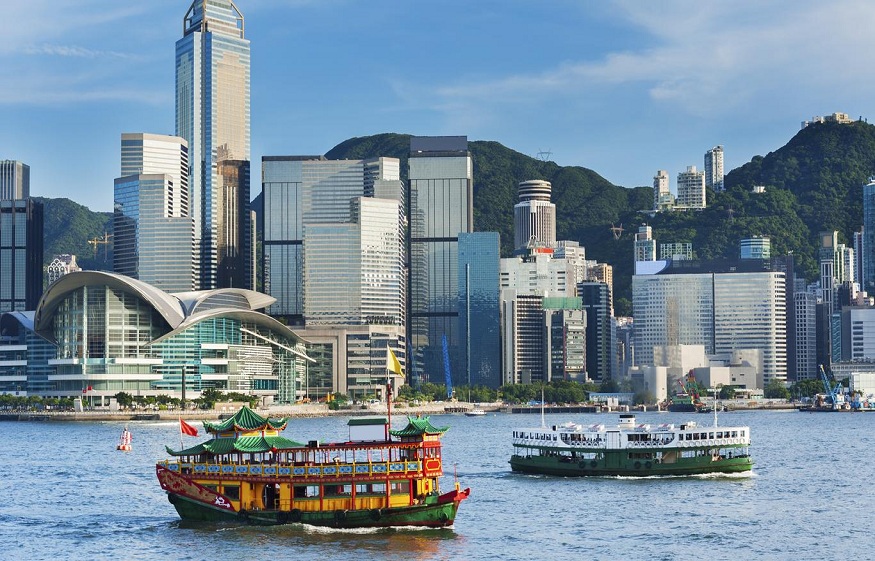Hong Kong offers many forms of public transportation to get you where you need to be. If exact change is an issue for you, consider purchasing an Octopus card as it will enable access to trains/metro, buses and trams with ease.
Red taxis can transport you around Hong Kong Island and Kowloon, while green ones service New Territories and Lantau Island. Each cab displays information regarding its charges inside. Several Cathay Pacific are available, and then you can use the Hong Kong transit tips below.
MTR
Hong Kong’s hyper-efficient mass transit system will be one of the first things that strikes visitors to this vibrant city, connecting urban areas across its territory through 11 interlinking rail lines with 91 stations spread out across 11 interlinking rail lines. Although initially daunting, this system can easily be navigated. Simply remember to collect an Octopus card at the airport prior to traveling and top it up at convenient stations or service providers such as 7-Eleven, McDonald’s or Starbucks locations before embarking on your journey.
Buses provide convenient transport between many of Hong Kong’s main attractions, making trips even to less accessible spots like Lantau Island and the New Territories easy. Just be sure to check the fares before boarding; these will vary based on distance traveled and can be paid using either your Octopus card, exact change (buses only accept bills), or Octopus cards – with some even offering nighttime routes!
If you want a unique perspective of Hong Kong’s countryside, hop aboard one of its iconic trams which make their way across 16km (10 miles). Starting in Western District and continuing through Central District, Wan Chai and Causeway Bay’s Des Voeux Road, Queensway Road and Hennessy Road; Hong Kong has one of the oldest tram networks worldwide dating back to 1904.
The MTR, formed with the merger between Kowloon-Canton Railway (KCR) and MTR in 2007, offers an expansive schedule. It is also the most cost-effective means of reaching Hong Kong Disneyland and the airport without needing a visa; two lines even connect directly with Shenzhen via Lok Ma Chau and Lo Wu Stations in mainland China.
Taxis in Hong Kong may not be as inexpensive as those found in North America and Europe, but they remain reasonably priced. While you can easily catch one off the curb or flag it down from the street, booking ahead via an app or website such as HKTaxi makes the experience smoother while offering you savings with shared rides if applicable. Red taxis operating on Hong Kong Island tend to offer superior service while blue and green ones only run within Lantau or New Territories territories.
Buses
Hong Kong boasts an expansive fleet of buses, from classic British double-deckers to sleek new electric vehicles that resemble San Francisco cable cars. Buses offer quick transportation solutions within and outside the city center; especially handy if staying downtown but wanting to visit some outlying neighborhoods. MTR stations and taxis cannot reach Stanley or Lantau Island via these modes; buses run daily from about 6am until midnight with flat fares of HK$2 (about $0.30) payable by Octopus card or exact change; children 11 or younger and seniors over 65 ride free; those numbered as “X” indicate express routes, which have limited stops along their routes.
MTR trains provide an efficient means of traveling longer distances, providing several lines to connect Hong Kong with its outlying areas. Simply keep your Octopus card handy when entering any public transit service as you’ll use this card across all forms as well as convenience stores, restaurants, cafes and vending machines around town!
At rush hour, however, trains may become overcrowded – so plan ahead and give yourself more time for boarding. Also keep in mind if traveling as part of a group: try not to separate too far apart on board and avoid standing in aisles.
Ferries are an integral form of transportation in Hong Kong. Since early colonial days, they’ve served as a main method of crossing Victoria Harbour efficiently and affordably – providing scenic passage from Hong Kong Island to Kowloon as well as offering service to offshore islands.
Taxis offer an efficient and economical means of traveling around the city, although they can sometimes be hard to spot during busy times in central districts. Taxis may be useful if your plans include visiting tourist spots not served by MTR trains or staying at hotels far from an MTR station; you can hail them directly off the street or use one of many taxi stands that line some streets – particularly those popular tourist and shopping districts.
Taxis
Hong Kong taxis are colorful, affordable, and iconic forms of public transport that provide a safe way to traverse the city for families and groups of friends alike. Drivers are heavily regulated and monitored by government regulators so scams should not arise; just make sure the meter is on when entering.
Taxis can be easily hailed on the street (within certain restricted zones), at designated taxi stands or from hotel concierge desks. When in a rush or just seeking something fun, one is usually close by.
Red taxis are the most prevalent, providing transportation in urban areas like Hong Kong Island, Kowloon and parts of New Territories. Green taxis also operate regularly along specific routes with set rates per destination while blue cabs can often be found in rural parts such as Lantau Island.
Most taxis still accept cash payments, while some now provide electronic options like Octopus cards or Apple and Samsung Pay payments. Some even feature dashboard card readers capable of processing major credit cards.
At peak hours, it is wise to call ahead for a taxi because hailing one on the street can be challenging due to taxi drivers sharing cars to maximize earnings. Flagging down one between 4:00pm and 4:15pm could prove especially challenging due to shift change.
Taxis offer another advantage to passengers by being familiar with the city’s backstreets and shortcuts, knowing the quickest and most efficient route to reach their destinations while avoiding traffic jams or road construction delays. Although this personalized service may add time to your journey, it will often save you from becoming stuck in traffic jams which would otherwise delay it further. For more information regarding taxi fares and charges visit Transport Department’s website.
Ferries
Ferries are an integral part of Hong Kong’s maritime atmosphere, making them one of the primary modes of transportation here. A variety of routes connect locations on Hong Kong Island and Kowloon with Lantau, Lamma, Cheung Chau and inter-islands via ferry rides. Simply purchase tickets through one of the ancient-looking turnstiles (Octopus cards are accepted as well as cash) then follow the crowd down ramp, across gangway and onto polished wooden benches before dodging fishing boats, tugboats and barges as you traverse Hong Kong harbor!
Once you’re settled into Hong Kong, taking advantage of its ferries will allow you to quickly explore more neighborhoods within a short amount of time. Running during both day and night hours, they make traveling from Tsim Sha Tsui hotel to Causeway Bay easy – whether for dining out or shopping!
Central Ferry Piers offer ferry rides to various islands outside the city, such as Cheung Chau and Lantau. Just keep in mind that weekend fares tend to be significantly higher and ferries can quickly become overcrowded with locals seeking respite from city life; thus it would be prudent to travel during a weekday instead.
Trams are an efficient and comfortable means of getting around Hong Kong, though only suitable for travelers familiar with its layout who speak Cantonese fluently; additionally they’re not very accommodating for people traveling with luggage.
Buses offer another great way of sightseeing and traveling between outlying locations. Buses operate all day and into the night, and tickets can be bought directly on-board. Just be sure to bring either an Octopus card or exact change, as most buses do not accept credit cards.
Taxis can also be an ideal transportation choice. Quick, clean, and comfortable rides await – though it is best to book ahead for peak times, to prevent long waits at peak periods. Keep in mind that government sets standards for taxi fares to prevent you being overcharged.




